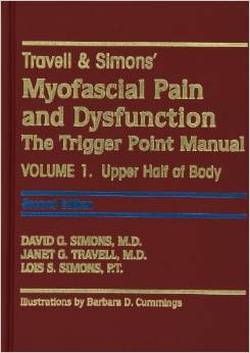

It is tender to palpation with a referred pain pattern that is similar to the patient's pain complaint. 5 An active trigger point causes pain at rest.

Trigger points are classified as being active or latent, depending on their clinical characteristics. The spots are painful on compression and can produce referred pain, referred tenderness, motor dysfunction, and autonomic phenomena. Trigger points are discrete, focal, hyperirritable spots located in a taut band of skeletal muscle. 3 These pain syndromes are often concomitant and may interact with one another. 3 This must be differentiated from fibromyalgia syndrome, which involves multiple tender spots or tender points. 2 Myofascial pain syndrome is a common painful muscle disorder caused by myofascial trigger points. 1 Musculoskeletal disorders are the main cause of disability in the working-age population and are among the leading causes of disability in other age groups. population, have one or more chronic disorders of the musculoskeletal system. Trigger-point injection has been shown to be one of the most effective treatment modalities to inactivate trigger points and provide prompt relief of symptoms.Ībout 23 million persons, or 10 percent of the U.S. Various modalities, such as the Spray and Stretch technique, ultrasonography, manipulative therapy and injection, are used to inactivate trigger points. Palpation of the trigger point will elicit pain directly over the affected area and/or cause radiation of pain toward a zone of reference and a local twitch response. Palpation of a hypersensitive bundle or nodule of muscle fiber of harder than normal consistency is the physical finding typically associated with a trigger point.

Trigger points may also manifest as tension headache, tinnitus, temporomandibular joint pain, decreased range of motion in the legs, and low back pain. These include muscles used to maintain body posture, such as those in the neck, shoulders, and pelvic girdle. Patients may have regional, persistent pain resulting in a decreased range of motion in the affected muscles. Acute trauma or repetitive microtrauma may lead to the development of stress on muscle fibers and the formation of trigger points.

They produce pain locally and in a referred pattern and often accompany chronic musculoskeletal disorders.


 0 kommentar(er)
0 kommentar(er)
